Brazilian Butt Lift in Metro Manila
Search and Compare the Best Clinics and Doctors at the Lowest Prices for Brazilian Butt Lift in Metro Manila

Find the best clinics for Brazilian Butt Lift in Metro Manila
No pricing info available
United Kingdom offers the best prices Worldwide
Price: $ 113
From 133 verified reviews
Mari Delos Santos, 16 April 2020
The main lobby will give you a feeling of being in a resort or hotel lobby. The newly open Central Park will be an extra treat, an amenity area that will give patients and visitors the feeling of being at home in their own garden. Doctors here are the best in the country. State of the art facilities and high tech medical equipment. How I wish every Filipino can experience the medical care and assistance at Thé Medical City.❤️ March 4, 2020, I went to the Ambulatory Service Center- as usual long line but patients are comfortably seated and patiently waiting. I have been on food and water fasting for my blood extraction. Not to over fast I approached the lady at the counter 4, to let her know of my situation. She was so quick in attending to my concern and never ask for anything, not even my ID or HMO. She accompanied me at the blood extraction area and everything I need was well taken cared of because of her. Thank you very much Ms. Maria Concepcion Calayan Golla for your kind assistance and compassion. Keep up the excellent work. May your tribe increase. All the best!❤️
From 12 verified reviews
Kinny Salas, 18 March 2020
Reasonable price, very clean and relaxing. Best facials and they treated my hyperkeratosis and pigmentation
From 12 verified reviews
Kinny Salas, 24 February 2020
Reasonable price, very clean and relaxing. Best facials and they treated my hyperkeratosis and pigmentation
From 2 verified reviews
Marivic Barrientos, 03 June 2020
I'm proud to say that I am one of his patient . Its been 15 yrs, still happy and contented from his work of art.Thanks dr. lajo .
Dr. Marlon O. Lajo Manila Doctors Hospital, can be found in Manila, Metro Manila, Philippines and offers its patients Brazilian Butt Lift procedures as well as 25 other procedures, across 2 different procedure categories. At present, there is no pricing information for Brazilian Butt Lift procedures at Dr. Marlon O. Lajo Manila Doctors Hospital. The pricing information is quite specialised, so it's only available on request. The lead specialist at the Hospital will be carrying out all the treatments, and Dr. Marlon O. Lajo Manila Doctors Hospital has several accreditations, including: PBPS - Philippine Board of Plastic SurgeryPAPRAS - Philippine Association of Plastic, Reconstructive and Aesthetic SurgeonsPCS - Philippine College of Surgeons
- Home
- Philippines
- Metro Manila
Compare Before & After Photos of _procedure_photos.phpBrazilian Butt Lift
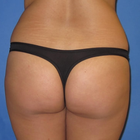

Front view
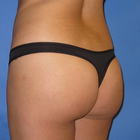

Half-side view
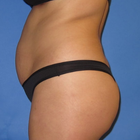
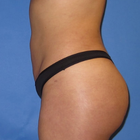
Full-side view
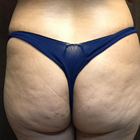
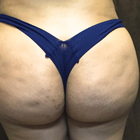
Front view
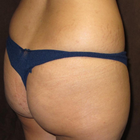

Half-side view


Full-side view
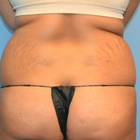

Front view
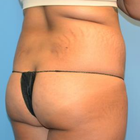
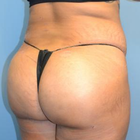
Half-side view
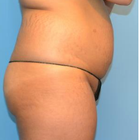
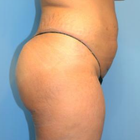
Full-side view
WHY US?
At Medijump, we're making medical easy. You can search, compare, discuss, and book your medical all in one place. We open the door to the best medical providers worldwide, saving you time and energy along the way, and it's all for FREE, no hidden fees, and no price markups guaranteed. So what are you waiting for?

Free

Best Price

Widest Selection

Risk-Free
What you need to know about Brazilian Butt Lift in Metro Manila
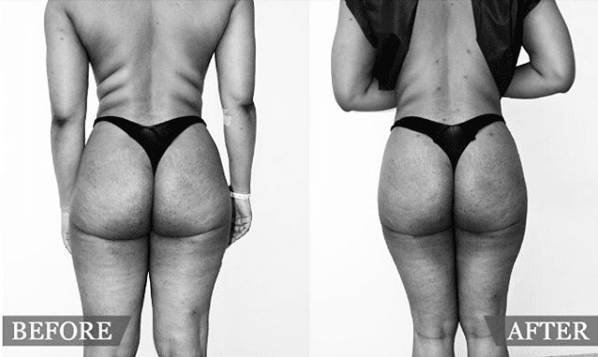
The Brazilian Butt Lift is a specialized fat transfer procedure that augments the size and shape of the buttocks without implants (with implants is the more traditional Butt-Lift procedure). A plastic surgeon first performs liposuction to remove fat from other areas of the body (often the stomach, hips, or thighs). These fat cells are then cleansed before being injected that into the buttocks at different depths for a more natural look and feel.
This plastic surgery procedure allows for perfectly shaped and round buttocks. It is most common among women, as plump and well-toned buttocks can vastly complement the physical appearance. Different fat transferring techniques are used to transfer adipocytes in your buttocks to give them a fuller appearance. A specialized surgeon removes excess fat cells from certain fat-rich areas of your body and injects them into your buttocks to augment them. It has a double advantage, as the donor site loses fat and becomes thin whereas the recipient site becomes plump. Aging and genetics can be the cause of flat butts.
Remember! Not everyone is a good candidate for this procedure. A number of factors should be considered before going for the surgery. Share your medical history with your potential surgeon and discuss your desired results, cost, risks, success rate, recovery time, aftercare, pros and cons of the surgery with the surgeon, and then go for it.
What is the cost of Brazilian Butt Lift in Metro Manila?
The expense of the Brazilian Butt Lift in Metro Manila tends to diverge significantly owing to a range of influencing factors. A combination of aspects like the complication level and length of the process, the proficiency and competence of the surgeon, along with other correlated medical expenses such as anesthetics or operating room charges contribute to this cost variance. It's beneficial to understand that the costs generally comprise fees for pre and post-surgical care.
In particular scenarios, the final cost could elevate if extensive liposuction is required for fat transfer. The volume of fat required for transfer, the sites from where the fat gets extracted, and the count of areas undergoing treatment might also impact the price. For this reason, there might be a minor irregularity in costs amongst clinics even within the same vicinity.
As this procedure is predominantly regarded as cosmetic, it isn't typically covered by insurance offerings. Consequently, full payment responsibility typically falls to the patient. Many surgical centers and surgeons may extend financing alternatives or installment deals to render the procedure widely accessible to an array of patients.
What does a Brazilian Butt Lift Procedure Involve?
The procedure begins with applying general anesthesia along with intravenous sedation. After this, the surgeon marks the places which need to be augmented with the surgical marker. Points are marked along which the fat is to be injected into your buttocks. Fat is obtained from the abdomen and flanks. The donor site is sterilized and the excessive fat is removed through liposuction. A cannula is inserted through small incisions and fat cells are collected in a specialized container. This fat is purified before injecting it into the recipient site. The excessive fluid is removed from it and sterilization reduces the chances of infection. Small Incisions of diameter 2-3mm are applied on your buttocks through which fat cells are injected. These incisions are given along creases or at places where they are least visible. After the procedure is completed, sutures are used to close the incisions and sterile tape is applied to the wounds.
How Long Should I Stay in Metro Manila for a Brazilian Butt Lift Procedure?
It is generally an outpatient procedure and takes 1-2 hours, after which you can either be discharged on the same day or an overnight stay in the hospital is usually advised, depending upon your physical state. Your health conditions are monitored and you are allowed to leave if everything is fine. Still, you will have to stay in Metro Manila for at least 14 days for follow up checks. During this period you are kept under observation, stitches are removed after and you're allowed to travel home.
What's the Recovery Time for Brazilian Butt Lift Procedures?
After this operation, you are not allowed to sit or lie with your whole weight on your buttocks for at least 2 weeks. You'll experience moderate pain during the recovery period which is controlled through painkillers. There is inflammation and bruising around the operated area, but this swelling subsides gradually in a few days. Do not drive for at least 6-8 weeks as it requires you to sit for a longer period of time. Normal activities associated with sitting and lying can be restarted after 8 weeks. You can start your norman routine after 10 to 14 days. A total of 6 months are needed for the complete results to show up.
After the initial healing, you may want to sit on a special pillow, which puts the pressure on your thighs rather than your butt.
What sort of Aftercare is Required for Brazilian Butt Lift Procedures?
It's crucial to follow your surgeon's post-procedure instructions to ensure proper healing and recovery. Here are some points which should be considered when looking after yourself after being discharged from the hospital:
- Do not take a bath for at least 48 hours after the surgery. It increases the chances of infection.
- Wear special garments that keep your butt lifted.
- Start walking a little the very next day after your surgery to avoid embolism.
- Do not sit or lie on your back for at least 2 weeks. Sleep on your side or abdomen.
- Do not bend or climb up the stairs.
- Avoid strenuous activities such as the gym, running, swimming, etc. because they might put stress on your stitches, opening them up before the due time.
- Do not lift your children or any other heavy object.
- Avoid smoking and drinking a few weeks before and after the surgery, as tobacco and alcohol slow down the natural healing process.
- Abstain from sexual activity until allowed by your doctor.
What Should You Expect Before and After the Procedure?
Ahead of the Brazilian Butt Lift, it's pivotal to ready your body for the operation. This preparation encompasses maintaining a healthy diet and weight. Patients are also advised to abstain from smoking and moderate alcohol consumption for several weeks prior to the surgery, to enhance your body's inherent healing capacity and lessen the likelihood of complications. Comprehensive discussions with your healthcare team during this time are crucial to comprehend fully the procedure, anticipated outcomes, potential risks, and the recuperation process. It's beneficial to have a candid discourse with your surgeon about your aesthetic objectives to ensure they are attainable and realistic.
After the Brazilian Butt Lift, anticipate a certain degree of discomfort and swelling in the regions where fat was eliminated and injected. This is a typical post-surgical symptom and can be managed effectively with prescribed medications. Nutrition plays an essential role in post-surgical recovery. A diet high in proteins and vitamins can promote quicker healing and improved recovery. Moreover, maintaining target weight post-surgery is vital to preserving the cosmetic results achieved.
What's the Success Rate of Brazilian Butt Lift Procedures?
A majority of patients undergoing the Brazilian Butt Lift often experience successful outcomes. This success rate is attributed to several factors including the surgeon's proficiency, the patient's health status, and the quality of the fat being transferred.
An important factor heightening the success rate is the Brazilian Butt Lift's use of autologous fat (fat from your own body). This approach lowers the likelihood of adverse side effects or rejection than when synthetic materials or implants are used. Furthermore, a strategic and individualized technique, involving careful and evenly distributed injection of the harvested fat into varying layers and sections of the buttocks, notably augments the survival rate of the transferred fat cells.
Notably, the patient's commitment to healthy lifestyle habits and adherence to post-operative guidelines significantly sway the success rate of the procedure. Regular exercise, maintaining an ideal weight, balanced nutrition, and sidestepping detrimental habits like smoking are instrumental in preserving the results of the Brazilian Butt Lift.
What are the Potential Risks of Brazilian Butt Lift?
Brazilian Butt Lift is the fastest growing cosmetic surgery in the world, but it's also known as one of the most dangerous. When performed by a qualified, experienced board-certified plastic surgeon, a Brazilian butt lift has a high success rate. To be successful, a fat graft needs nutrition and so has to be injected into tissue that has a blood supply. Fat can survive if injected into other fat, but up to 90% of it can be absorbed if it is. Fat has more chance of staying in place if it is inserted into muscle – but this is where the risk lies. Injecting fat into the buttock can easily lead to serious problems if done incorrectly. These include a fat embolism when fat enters the bloodstream and blocks a blood vessel.
According to a study by Mayo Clinic, 1/3,000 people who went through this surgery died - although these odds are tiny, it still represents the highest risk among the popular plastic surgeries. Still, Brazilian butt lift surgery is on increase due to an increasing craze for big buttocks. Always opt for an experienced and certified surgeon to avoid any complications
Are there Alternatives to Brazilian Butt Lift Procedures?
Some non-surgical alternatives are also available to Brazilian butt lift surgery. Surgery should never be the only option:
- Sculptra Aesthetic: it is a filler best known for butt lifting. It is injected into the butts where it stimulates collagen production and improves the elasticity of the area. Increased collagen increases the size and gives a rounded contour to your buttocks. 2-3 sessions are needed for the best results. It is a quick treatment with almost no downtime.
- Thermage: radiofrequency waves are used in this technique. These waves heat up the skin and underlying tissue boosting collagen production. As a result, your butts look lifted and toned.
- Exercises: some exercises are found to be effective in contouring your buttocks and increasing the muscle mass, particularly squats.
Whilst the information presented here has been accurately sourced and verified by a medical professional for its accuracy, it is still advised to consult with your doctor before pursuing a medical treatment at one of the listed medical providers
No Time?
Tell us what you're looking for and we'll reachout to the top clinics all at once
Enquire Now

Popular Procedures in Metro Manila
Prices Start From $208

Prices Start From $600

Prices Start From $167

Prices Start From $931

Prices Start From $76

Recommended Medical Centers in Metro Manila for Brazilian Butt Lift

- Interpreter services
- Translation service
- Religious facilities
- Medical records transfer
- Medical travel insurance
- Health insurance coordination
- TV in the room
- Safe in the room
- Phone in the room
- Private rooms for patients available

- Interpreter services
- Translation service
- Religious facilities
- Medical records transfer
- Medical travel insurance
- Health insurance coordination
- TV in the room
- Safe in the room
- Phone in the room
- Private rooms for patients available

- Interpreter services
- Translation service
- Religious facilities
- Medical records transfer
- Medical travel insurance
- Health insurance coordination
- TV in the room
- Safe in the room
- Phone in the room
- Private rooms for patients available

- Interpreter services
- Translation service
- Religious facilities
- Medical records transfer
- Medical travel insurance
- Health insurance coordination
- TV in the room
- Safe in the room
- Phone in the room
- Private rooms for patients available

- Interpreter services
- Translation service
- Religious facilities
- Medical records transfer
- Medical travel insurance
- Health insurance coordination
- TV in the room
- Safe in the room
- Phone in the room
- Private rooms for patients available

- Interpreter services
- Translation service
- Religious facilities
- Medical records transfer
- Medical travel insurance
- Health insurance coordination
- TV in the room
- Safe in the room
- Phone in the room
- Private rooms for patients available

- Interpreter services
- Translation service
- Religious facilities
- Medical records transfer
- Medical travel insurance
- Health insurance coordination
- TV in the room
- Safe in the room
- Phone in the room
- Private rooms for patients available

- Interpreter services
- Translation service
- Religious facilities
- Medical records transfer
- Medical travel insurance
- Health insurance coordination
- TV in the room
- Safe in the room
- Phone in the room
- Private rooms for patients available

- Interpreter services
- Translation service
- Religious facilities
- Medical records transfer
- Medical travel insurance
- Health insurance coordination
- TV in the room
- Safe in the room
- Phone in the room
- Private rooms for patients available

- Interpreter services
- Translation service
- Religious facilities
- Medical records transfer
- Medical travel insurance
- Health insurance coordination
- TV in the room
- Safe in the room
- Phone in the room
- Private rooms for patients available
Brazilian Butt Lift in and around Metro Manila
About Manila
Manila is the capital of the Philippines and is divided into 16 districts; it is one of the densest and populated cities of the world. Each district has its own history and cultural legacy. The city was under the rule of Spanish conquerors for almost three centuries. You can see the remains of that era in the ruins of the historical buildings. Today, the City is very modern with tall skyscrapers and modern architecture.
The Philippines is developing into one of the top countries in the world for medical tourism. Approximately 15 million people globally travel to other countries in search of quality medical care at affordable prices. Manila is a favorite destination due to the following reasons:
- It provides state-of-the-art procedures at affordable prices.
- With excellent infrastructure, the City can handle the large numbers of foreigners who visit Manila.
- The Hospital and clinic staff are very competent, friendly, and educated and have a good knowledge of English to communicate with their patients.
- The doctors are very well-qualified and hold international certifications.
- The city has a reputation in providing excellent post-surgical care by the nurses and physiotherapists.
- The Medical Industry provides many alternative therapies at some of the best spa resorts. You can combine a surgical procedure with alternative healing therapies at the same time.
Popular Areas in Manila
Manila Bay has many tourist spots and you will find many monuments that depict the Spanish occupation of the country. There are many Baroque Colonial Churches that will enable you to appreciate the artistic designs.
The National Museum of the Philippines, Bahay Chinoy, the National Art Gallery, and the Metropolitan Museum of Manila are some of the popular museums that you must visit in Manila. Rizal Park also known as Luneta is a historical urban park that is worth visiting.
There are also many organized tours that can help you get the best out of your sightseeing, for example, the Intramuros Tour, Rizal Park Tour, or the Skyscraper Gazing Tour and more.
Manila is a very modern contemporary city as the historical buildings have been replaced by modern architecture with better planning and layout and the buildings are earthquake resistant.
The city has many cultural and religious festivals throughout the year. There are plenty of shops, both big and small where you can buy branded goods at affordable prices.
Weather and Climate in Manila
The Philippines is a tropical country and in Manila, you will not experience too much temperature variations. January is the coolest month while May is the warmest month. The average temperature remains between 14°C and 38°C. The rainy season is between May and November. The rest of the months are dry. Manila is a humid city and bad weather such as Typhoons may occur during the months of June and September.
Getting around in Manila
People traveling from nearby countries such as Malaysia and Indonesia can use the City’s sea entry points. For all other passengers, the best option is to take the air route.
The Ninoy Aquino International Airport is the City’s major international airport. It has four different terminals that connect via bus transfers. If you are taking a connecting flight, remember to keep some time as a buffer, as transfers may force you to travel through the busy streets of Manila. Terminal 1 caters to International flights and Philippine Airlines uses T2 and domestic carriers and international carriers use T3 with budget carriers largely using T4.
You can take a bus from the airport to the city. Taxis have meters and you can hail a cab outside the airport. Buses and small vans or jeepneys are popular modes of transport within the city.
Manila has three light rail systems and one heavy train line. The light rail systems are the LRT-1, LRT-2, and MRT-3. You can also use the pedicabs and tricycles for shorter distances. In some areas, you can even find horse-driven carriages called calesa.
Tourist Visas in Manila
The visa process is not a very complex system as the Philippines has a visa waiver program for certain countries. All European nations, South American countries, and many others form part of this program. Citizens from these countries can stay in Manila for up to 30 days, whereas nationals from Brazil and Israel may stay in Manila for 59 days. Hong Kong, Macau, and Portugal residents can stay for 14 days without a visa. Tourists belonging to other countries need to apply for a visa to enter the Philippines, in the consulate in their respective countries.
You must also have a valid return ticket. Passport must also be valid for at least six months and beyond to stay in the country. Visa-exempt people may extend their stay by one or two months after which they will have to apply for a visa.
Additional Information
- The currency of the Philippines is Peso (symbol: ₱). It is strong in the world market and the usual exchange rate is 1 Dollar equals 50 Pesos. Dollars are easy to exchange compared to other currencies.
- Credit cards are acceptable in almost every place. The city also has many ATMs from where you can withdraw money without difficulty. However, ATMs will charge you a minimal exchange fee on foreign cards.
- Bargaining and negotiating are acceptable in most places and it can get you better deals.
- Restaurants may add a service charge of up to 10%. You can pay a cash tip of 5 to 10 %. People often round off the taxi fare.
- Manila is a city full of people who speak English proficiently. Filipino and English are the two official languages. Filipino is a variety of Tagalog, Austronesian languages.
- Hindu, Muslim, Buddhism, and Christian religions have left their mark on the Philippines at different periods. Today, a majority of the population is Roman Catholic.
- There are many public holidays in Manila. Some of the important ones are Christmas Eve, Christmas, Eid al-Fitr (Ramadan), Labor Day, New Year, and Good Friday, etc. The Independence Day falls on June 12th and Manila Day on 24th June.
Popular Searches
- Plastic Surgery in Thailand
- Dental Implants in Thailand
- Hair Transplant in Thailand
- Breast Augmentation Thailand
- Gastric Sleeve in Thailand
- Gender Reassignment Surgery in Thailand
- Laser Hair Removal in Bangkok
- Botox in Bangkok
- Dermatology in Bangkok
- Breast Augmentation in Bangkok
- Coolsculpting in Bangkok
- Veneers in Turkey
- Hair Transplant in Turkey
- Rhinoplasty in Turkey
- Stem Cell Therapy in Mexico
- Rhinoplasty in Mexico
- Liposuction in Mexico
- Coolsculpting in Tijuana
- Rhinoplasty in Korea
- Scar Removal in Korea
- Gastric Sleeve in Turkey
- Bone Marrow Transplant in India
- Invisalign in Malaysia
- Plastic Surgery in the Dominican Republic
- Tummy Tuck in the Dominican Republic
- Plastic and Cosmetic Surgery in Poland
- Rhinoplasty in Poland
- Hair Implant in Poland
- Dental Implants in Poland
- IVF in Turkey

